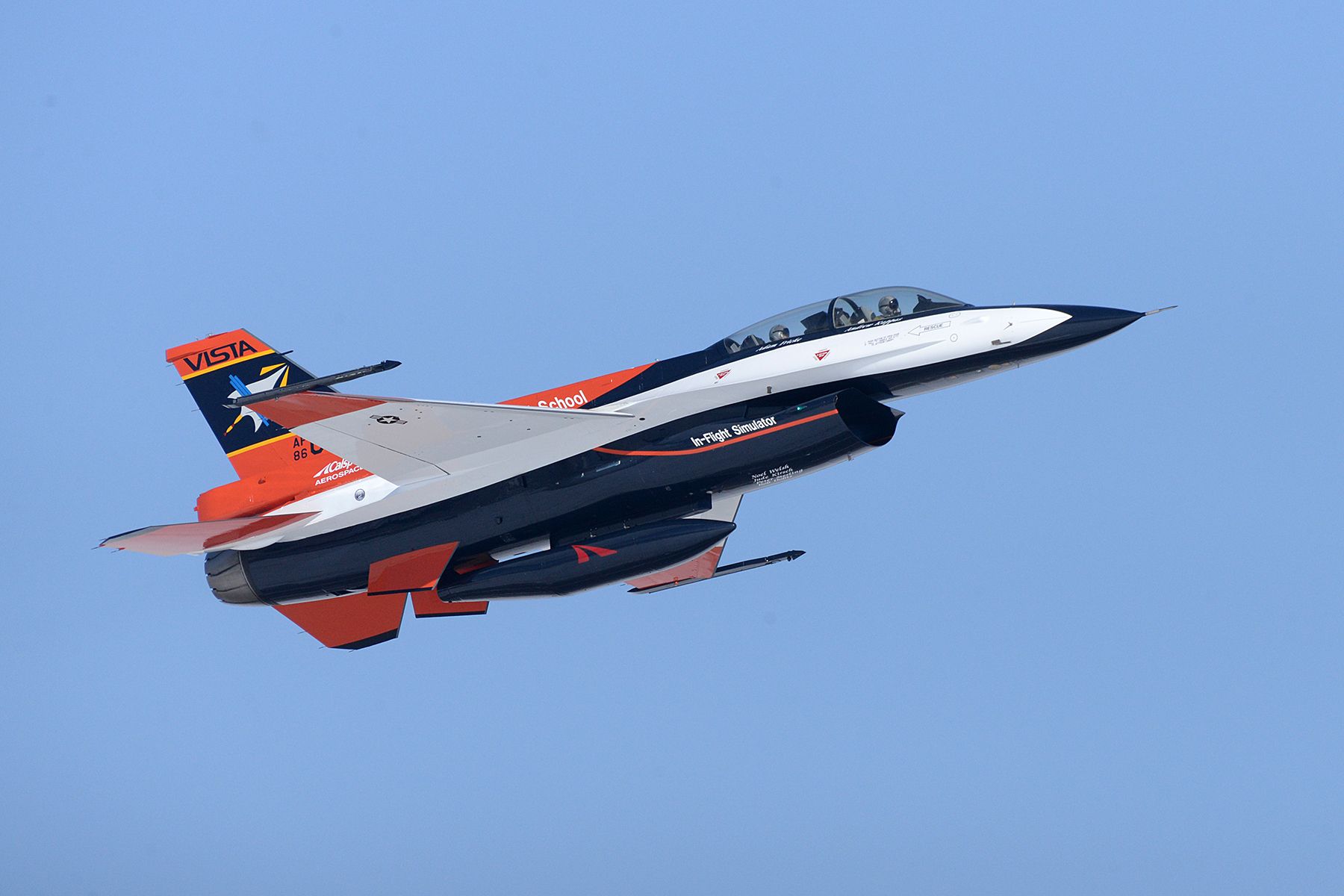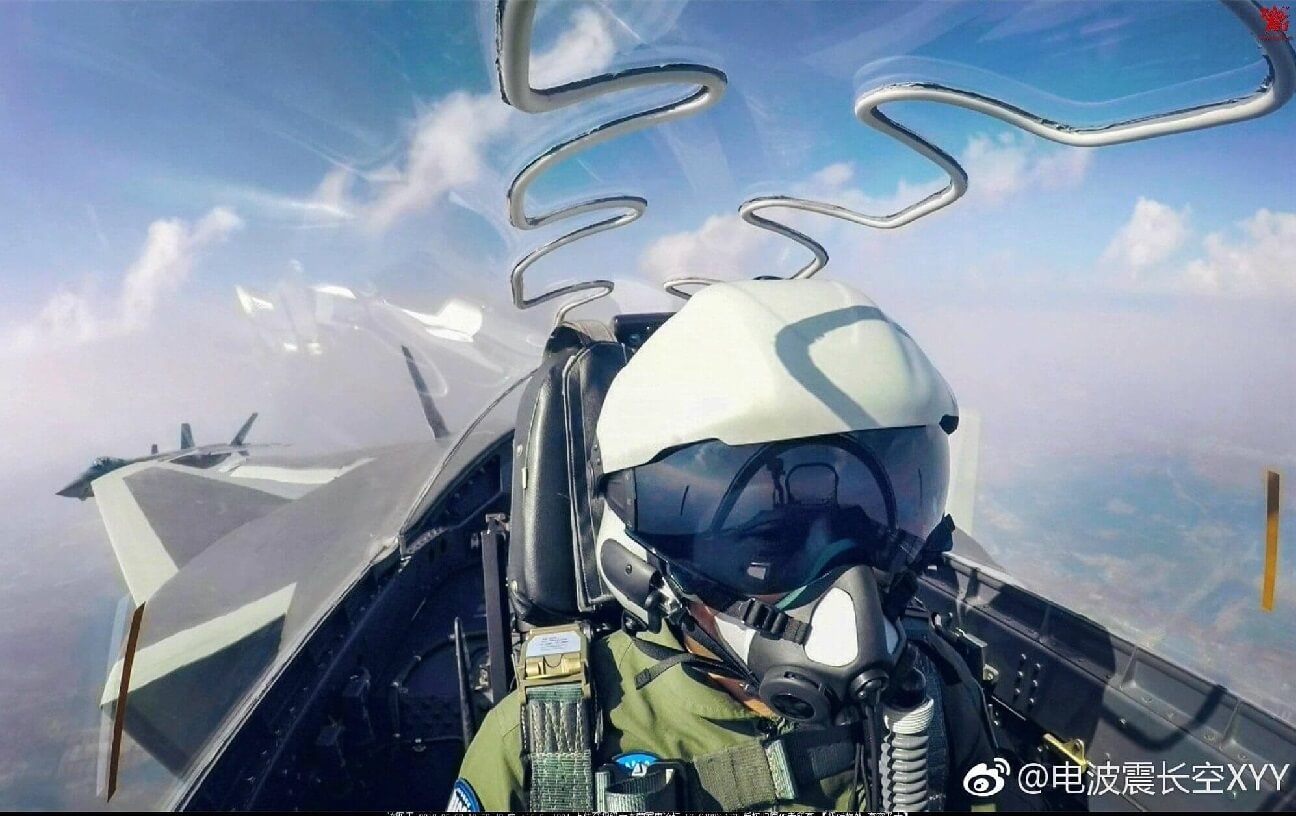Picture this: An unmanned combat air squadron launches into hostile skies, guided not by human pilots but by the cold calculus of artificial intelligence. With lightning speed, the AI war manager assesses threats, devises intricate battle plans, and unleashes a blistering onslaught of precision strikes against enemy strongholds. Each maneuver executes with machine perfection as the AI mastermind adapts seamlessly to the ever-shifting tides of aerial combat.
But hold on, this isn’t Hollywood fiction…
Welcome to the new age of hybrid airpower!
The Race For AI Supremacy Takes To The Skies
In the high-stakes game of military one-upmanship, a new battlefront has emerged – the fusion of Artificial Intelligence (AI) with aerial combat systems.
China claims to have seized a potential edge, developing an “intelligent air combat AI” capable of not only making split-second tactical decisions but also explaining its reasoning to human partners using an intelligent discourse of data visualizations and natural language.
This shatters the long-standing “black box” quandary that has handcuffed militaries – the inability of inscrutable AI systems to articulate the rationale behind their choices. Chinese researchers claim their ground-breaking AI can engage in a form of intelligent discourse, using words, data visualizations, and even charts to illuminate why it issues specific flight instructions.
The profound implications? An AI co-pilot is able to forge an unprecedented hybrid of linguistics between the domains of machine logic and human contextual intellect. Moreover, the Chinese team audaciously boasts that this symbiotic melding of abilities can achieve a staggering near-100% win rate in simulated aerial combat scenarios.
Meanwhile, the United States finds itself still grappling with the opaqueness of current AI architectures. Recently, The US Air Force Secretary experienced first-hand the limitations when a “still-learning” AI controlled his F-16 flight, its decision-making processes during potential weapon deployments remaining obfuscated.
“Warfare in general and air warfare in particular is undergoing a dramatic change rapidly due to advanced technologies. Among these technologies, those with the greatest impact include Quantum, AI, Hypersonics, Stealth, Nano, Miniaturization, Robotics, and others. AI has a big potential for warfare applications,” Air Marshal Anil Khosla (Retd.), Vice Chief of the Air Staff (VCAS) of the Indian Air Force, told the EurAsian Times.

US Armament With AI
In a bold move, the US has embarked on an ambitious endeavor dubbed ‘Replicator,’ designed to rapidly bolster its capabilities in the face of escalating competition, particularly from the People’s Republic of China.
The heart of Replicator lies in swiftly deploying thousands of attritable autonomous systems, harnessing the power of AI, robotics, and cutting-edge technology. With a staggering budget of US$1 billion allocated by the Department of Defense, the Replicator program aims to construct a formidable fleet of compact, weaponized autonomous vehicles.
The Pentagon is abuzz with over 800 active military AI projects, spanning from streamlining processes and evaluating threats to enhancing battlefield decision-making. Notable initiatives include the innovative “Loyal Wingman” program and the deployment of swarm drones like the formidable V-BAT aerial drone.
“The current trend in air combat platforms involves AI-based unmanned aircraft collaborating with manned aircraft, harnessing the advantages of both. This strategy is dubbed the ‘Loyal Wingman Concept.’ I call it the ‘Mother Goose Concept.’ All sixth-generation platform programs are striving toward this objective,” remarked Air Marshal Anil Khosla.
In a groundbreaking demonstration of its capabilities, the US Naval Forces Central Command’s (NAVCENT) Task Force 59 recently showcased its prowess by executing a successful attack on a simulated enemy target using live rockets, all orchestrated by an unmanned vessel. Experimental submarines, tanks, and ships have already been outfitted with AI capabilities to navigate and engage targets autonomously.
Furthermore, the US military has openly acknowledged its utilization of AI and machine learning algorithms to identify potential targets for airstrikes in conflict zones such as Iraq, Syria, and Yemen. These sophisticated algorithms, developed under Project Maven—a collaborative effort between Google and the Pentagon—are carefully supervised by human operators to ensure precision and ethical use in target selection processes.
China’s Investment In AI
While the world closely monitored China’s economic resurgence and geopolitical ambitions, a powerful undercurrent has been gathering force – a concerted national drive to harness artificial intelligence as a potent force multiplier across all warfighting domains.
Beijing has supercharged investments in robotics, swarming technologies, artificial intelligence (AI), and machine learning’s myriad militant applications.
Their landmark 2017 “New Generation AI Development Plan” plainly prioritizes unmanned combat systems, and other advanced military innovations take center stage, reflecting China’s strategic prioritization of AI technologies.
According to a report titled ‘AI Weapons in China’s Military Innovation’ by Global China, Chinese military experts and strategists from institutions like the PLA’s Academy of Military Science, National Defense University, and the National University of Defense Technology foresee a future where AI and intelligent weaponry will assume increasingly pivotal roles, potentially even tipping the scales in future conflicts.

China’s Challenges US
China is now challenging the long-standing US dominance in aerial combat platforms as it surges ahead in investment and research and development (R&D) across several ground-breaking technologies.
While US technology has evolved and been proven over the years, Chinese advancements are claimed and not demonstrated or proven. Notwithstanding, these claims cannot be taken lightly, according to Anil Khosla.
Furthermore, Anil Khosla emphasizes that maintaining a lead in the technological race revolves around the defense market. Securing a foothold in the defense market holds immense appeal for both economic and strategic considerations. On the economic front, it serves as a vital revenue stream and contributes to job creation. Strategically, it reduces the dependency of importing nations on external sources.
As this AI arms race intensifies, extending beyond just aviation to pervade all domains of warfare, the nation that unlocks the secret of harmonizing machine intelligence with human cognition could seize an extraordinary strategic advantage. The theater may be the skies, but the stakes could hardly be higher.
Keeping The Atomic Finger Off AI Trigger
Back in the Cold War days, all eyes were on the nuclear arms race, a chilling competition that morphed into today’s reality of mass destruction weapon systems on the battlefield.
Fast forward to now, and the numbers are staggering: a whopping 12,500 nuclear warheads, with Russia and the US dominating possession, claiming nearly 90% of this terrifying arsenal.
A recent report from the Arms Control Association reveals the extent of nuclear stockpiles: Russia leads with 5,889 warheads, trailed closely by the US with 5,244, and China with 410.
Moreover, beyond the five permanent Security Council members—US, China, France, Russia, and the UK—other nations recognized under the nuclear non-proliferation treaty as nuclear-capable include Israel, India, Pakistan, and North Korea.
In a recent statement, US State Department arms control official Paul Dean underscored the importance of human control over nuclear decisions, emphasizing that the US has unequivocally committed to ensuring that only human beings have the authority to deploy nuclear weapons.
This sentiment is echoed by the UK and France, who have pledged to keep nuclear control firmly in human hands, shunning the involvement of AI. Furthermore, the US has urged China and Russia to follow suit, urging them to prioritize human oversight in the utilization of these immensely powerful weapons rather than entrusting such decisions to artificial intelligence.
The AI Conundrum
In conclusion, the integration of AI into military systems represents a significant leap forward in modern warfare. As highlighted by Anil Khosla, within novel systems that amalgamate multiple sensors and weapon systems into a unified framework. These systems must sift through vast amounts of data for analysis.
The fusion of AI and quantum computing enables this process to occur rapidly. When combined with miniaturization, one obtains an optimal system for airborne platforms—small, lightweight, yet possessing high computing power and speed. The integration of these technologies would furnish decision-makers with swift decision-making tools, such as decision support systems and ‘what if’ option tools.
However, it is crucial to acknowledge AI’s inherent limitations, particularly in its current state. While AI excels at executing mundane tasks and analyzing data patterns, its ability to make nuanced decisions remains questionable. This raises ethical and practical concerns, especially in the context of lethal autonomous weapons (LAWs) equipped with AI.
The proliferation of LAWs, empowered by AI, sparks heated debates among experts, touching upon issues of legality, ethics, and the potential for unintended consequences. While AI-enhanced drones may enhance military capabilities, they also introduce new risks and challenges that must be carefully considered.
As we navigate this AI conundrum, it is imperative to approach the integration of AI into military systems with caution and foresight. By striking a balance between technological advancement and ethical considerations, we can harness the potential of AI to enhance military capabilities while mitigating risks and safeguarding human interests. Only through thoughtful deliberation and collaboration can we navigate the complexities of AI in modern warfare responsibly.
- Opinion by: Shubhangi Palve
- Contact the author at shubhapalve (at) gmail (dot) com.




